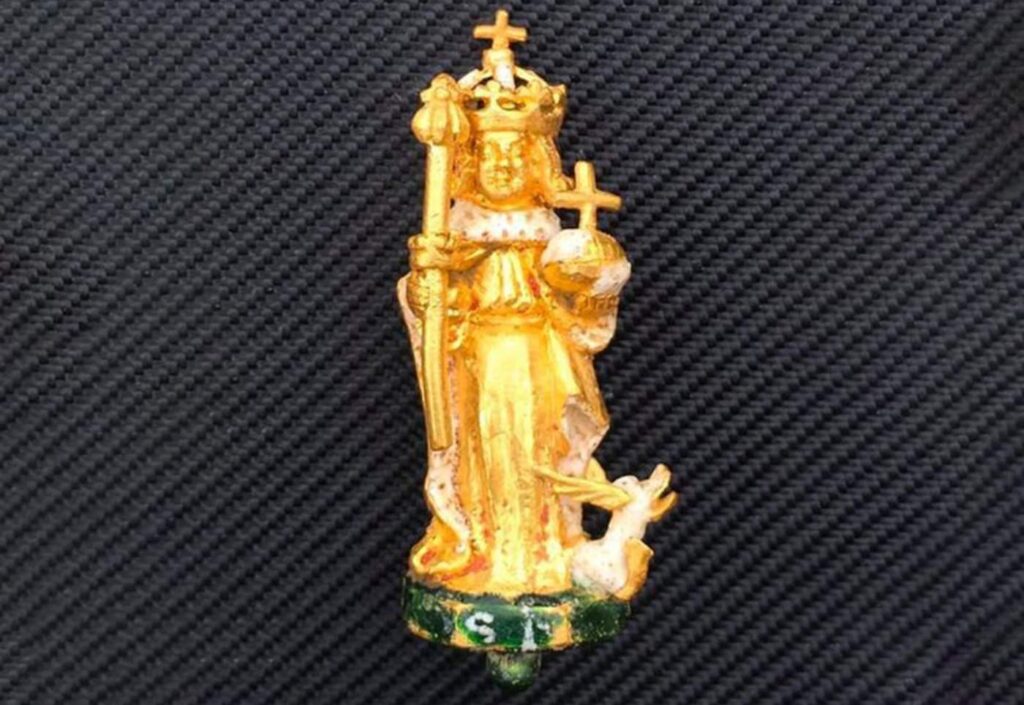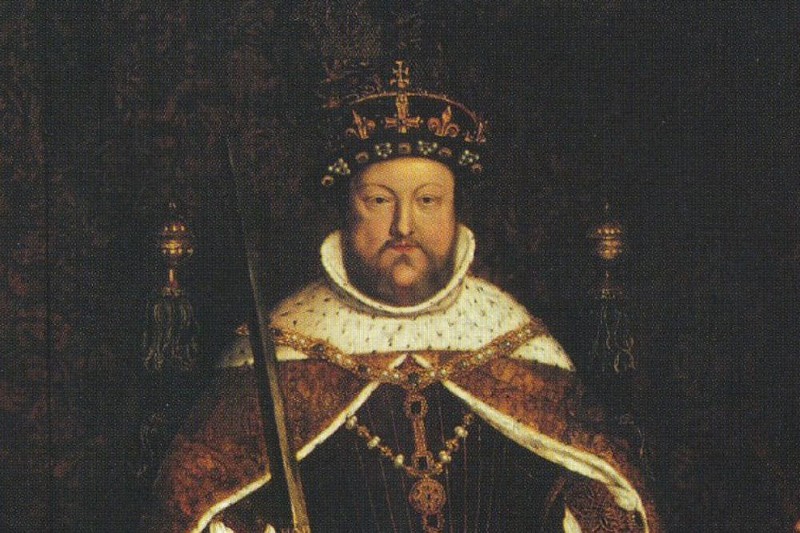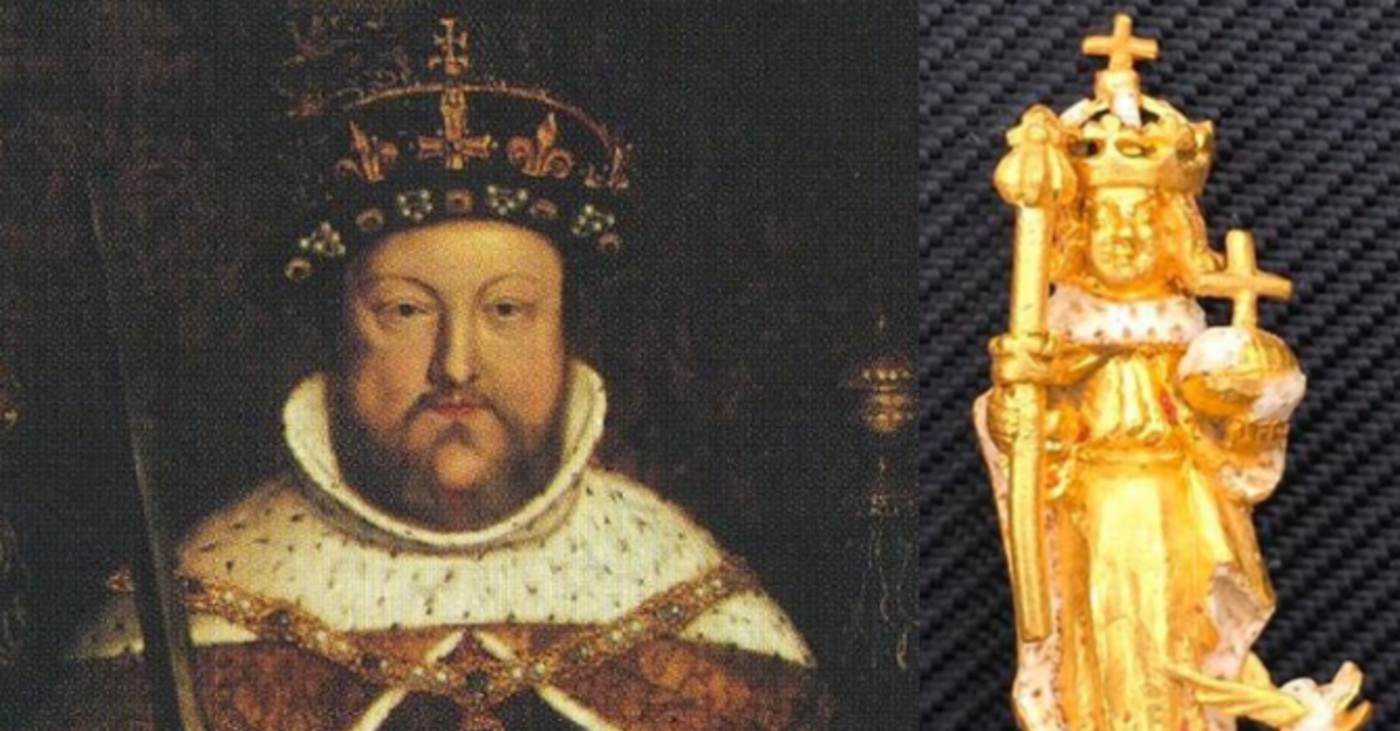How many times has this happened to you? You’re a soon-to-be-booted British monarch running away from the 1645 Battle of Naseby clutching a priceless gold diadem in your sweaty fist, but due to the slavering Roundhead horde nipping at your heels you don’t have time to stop and retrieve the not-so-lucky totem when it inadvertently slips from your grip as you beat a hasty retreat.
Some archeological historians speculate that might just be how an enameled gold figurine with an estimated value of $2.7 million dollars found its way into the Northhamptonshire field where amateur treasure hunter Kevin “Kev” Duckett found it in 2017.

“There may be a thousand reasons why the gold figure of Henry VI ended up in a Northamptonshire field,” writes British historian Leanda de Lisle. “But it is striking that the find site is exactly on the route Charles fled from the battle of Naseby in 1645, and in a place that saw extreme violence.
In order to escape the conflict, Charles was forced to charge Oliver Cromwell’s cavalry. He’s said to have dropped his pistols after firing them in the process of jumping a stream. “Perhaps it wasn’t all he dropped,” de Lisle postulated.
Although Duckett’s been hunting buried booty for three decades, it was during his maiden metal-sweeping foray searching a previously undisturbed site that the stunning icon turned up just inches beneath the topsoil.
Duckett knew what he’d found was a Tudor relic, but he had no idea what the 1.4-inch hunk of history really was until he’d immersed himself in research. After three years of sifting through royal inventories dating back centuries, he ironically pinned down its provenance after viewing its doppelganger in a Historic Royal Palaces YouTube video featuring a reproduction of a crown once belonging to Henry VIII.

Duckett made a pilgrimage to Hampton Court Palace to view the duplicate crown in person. What he saw was enough to convince him that the figurine of King Henry VI depicted as a saint he’d unearthed had once been its centerpiece.
“The very thought that Henry VIII used to wear this figure in his crown on his head over 500 years ago when he was the most powerful man in the land is just mind-blowing,” Duckett told the Harborough Mail. “I can still hardly believe that I have found this magnificent royal piece in a humble farmer’s field near Market Harborough.”
MORE: 4-Year-old Girl Finds Dinosaur Footprint on a Beach From 215 Million Years Ago
By law, Duckett turned his find over to the authorities who sent it on to the British Museum in London for further study. If it does turn out to be a true piece of the Tudor crown, Duckett and the owner of the site where the royal trinket turned up will receive a handsome bounty from its sale to a museum.
Duckett isn’t alone in his enthusiasm for treasure hunting, and during the pandemic, the number of “detectorists” as they’re called in the UK, has been steadily on the rise. Metal detecting is a pastime that’s well suited to both social distancing and indulging our sense of adventure.
RELATED: ‘Stunning’ Victorian Bathhouse Uncovered Beneath a Manchester Parking Lot
“There are many more people using metal detectors than there are archeologists, so they find much more stuff, and it’s transforming our view of the past,” academic archeologist Professor Carenza Lewis told ITV.
For Kev Duckett the journey from finding a priceless piece of history to authenticating it has been a long and arduous one. While at the moment, the final outcome is still in limbo, Duckett’s not in the least discouraged. “Treasure hunting is in my blood, it’s deep in my DNA,” he said on his Facebook page, “and finding treasure doesn’t come any better than this.”
SHARE This Stunning Find With Your Pals on Social Media…




















